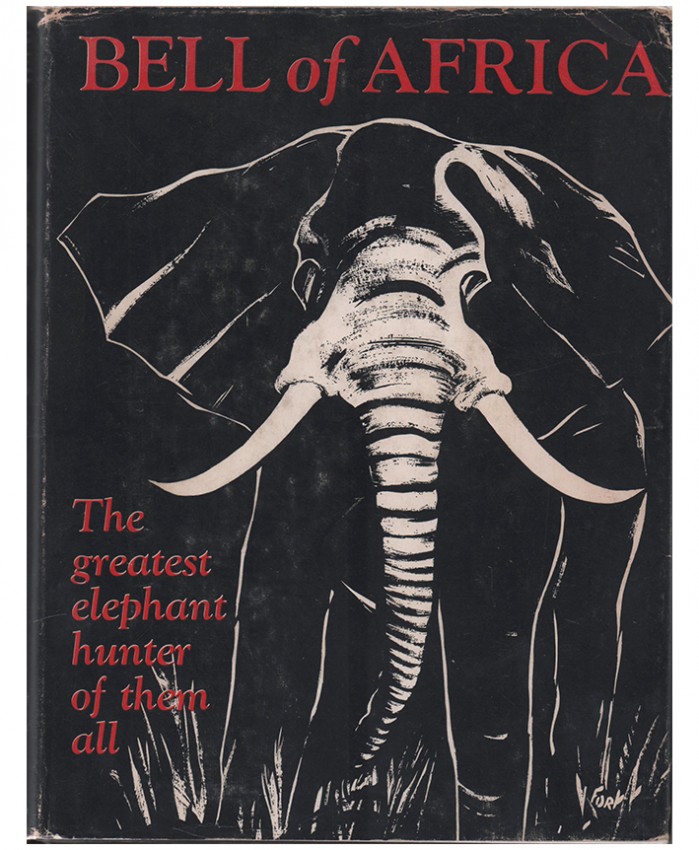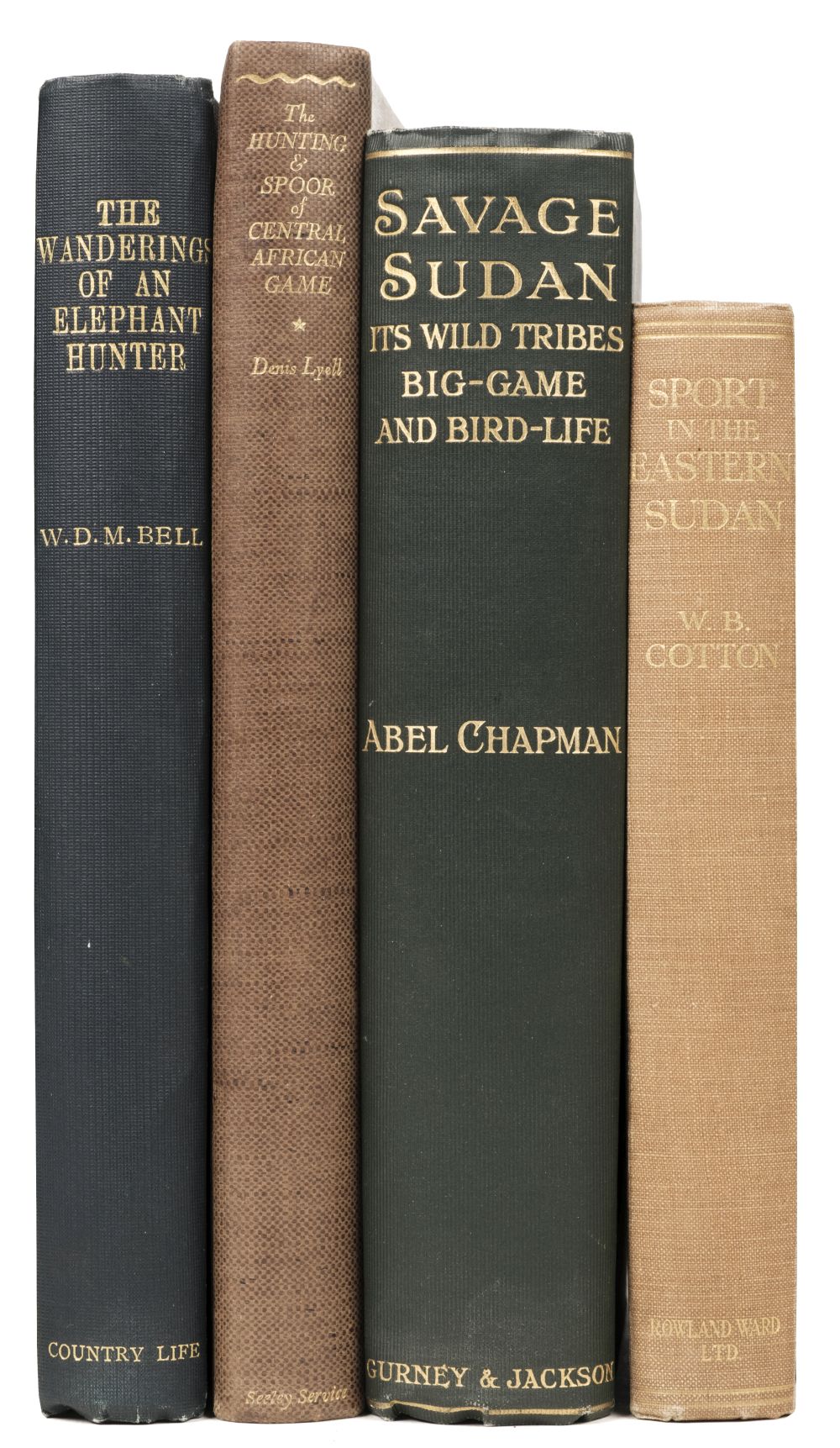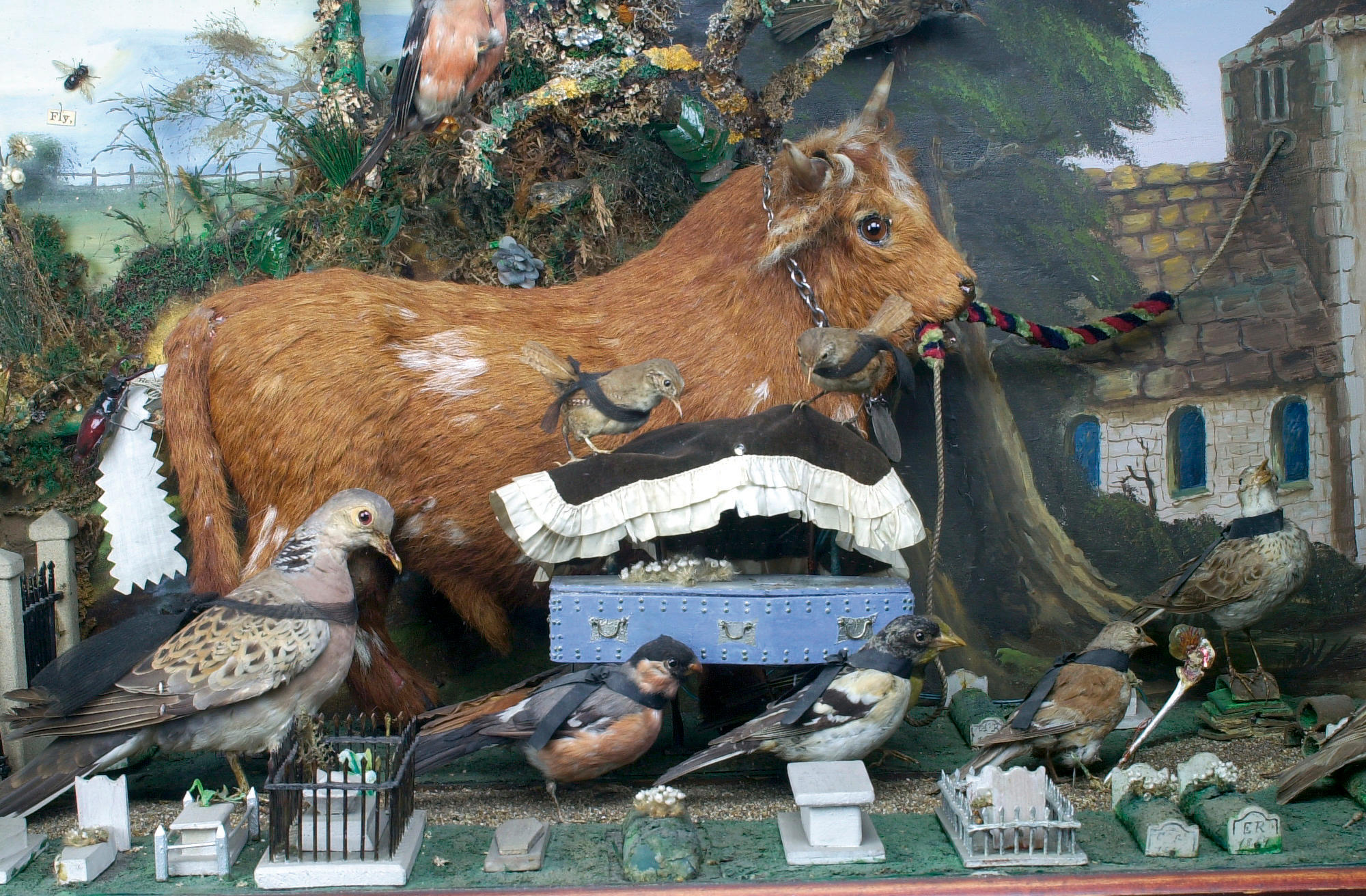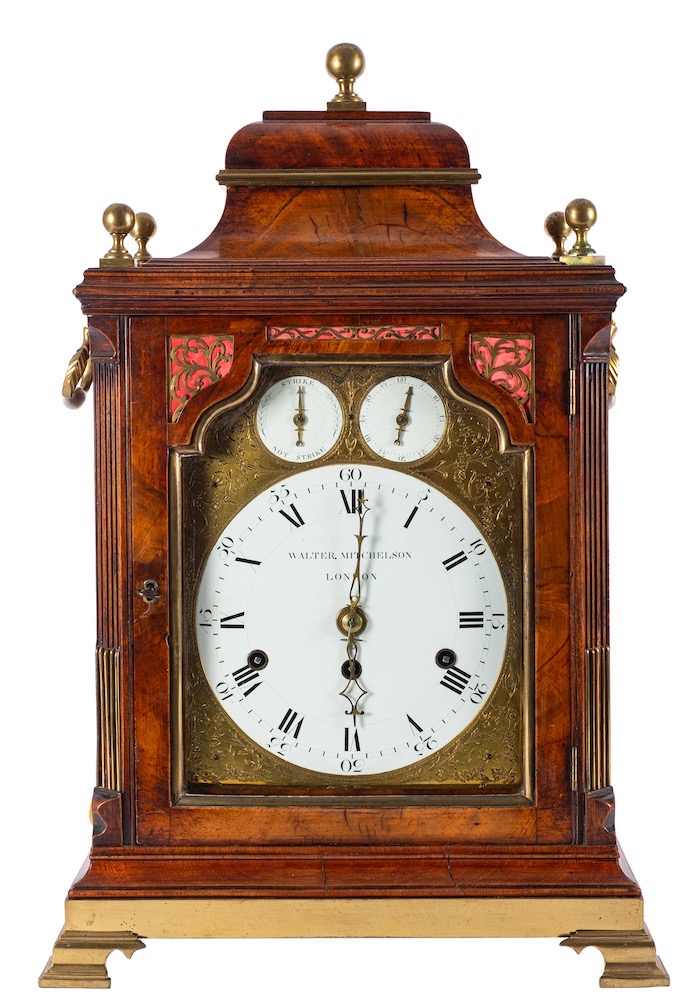BELL, Walter D.M. ("Karamojo", 1880-1951). An extensive archive containing the majority of Karamojo Bell's original drawings and manuscripts. Regarded as the greatest elephant hunter of all time, Bell was born in Scotland in 1880. He volunteered for a mounted Canadian unit, but during action his horse was shot and he was captured by Boer forces. He succeeded in escaping back to the British lines and survived the war without any problems. Bell stayed on in Africa to carry out his passion for hunting elephant. W. D. M. Bell, an intrepid adventurer, he earned the nickname "Karamojo" for his extraordinary elephant-hunting exploits in the Karamoja Province of Uganda and elsewhere. In his career he shot a total of 1,011 elephants, the majority of them by shooting them through the brain with the small bore calibre .275 Rigby that is identical to the Boer 7x57 Mauser. Bell perfected his shot to the degree that he mastered it from all positions, including diagonally from the back. This has since been referred to as a "Bell shot." During WWI Bell again volunteered and became a fighter pilot in modern-day Tanzania. There he gained fame for flying without an observer in the front cockpit, since he thought that they blocked his view when he tried to shoot at the Germans with his big bore elephant hunting rifle. Later he served in France and Greece and got the MC twice. In WWII he assisted in evacuating allied soldiers from Dunkirk in his yacht Trenchmere . He finally died from a heart attack at his Scottish estate in 1951. Bell's first book, The Wanderings of an Elephant Hunter , is considered by many to be the greatest of all elephant books by the greatest of all elephant hunters, a gripping series of elephant-hunting essays and stories during the glory days of Bell's career. Bell's approach to elephant hunting systematic and revoltionary: he studied the anatomy of elephants in order to establish the trajectory of bullets from any angle, and Wanderings of an Elephant Hunter includes the diagrams of Bell's perfected shot placement. Included in the archive are a vast number of the original manuscripts, watercolors and drawings prepared by the great sportsman. Provenance : The archive was bought for Russell B. Aitken by Quentin Keynes, circa 1961. Quentin Keynes was a young explorer, member of the Explorers Club and veteran of many expeditions. He made documentary photographs of two Giant Sable Antelope bulls in combat published in Life Magazine in 1955. BOOKS 1) BELL, Walter D.M. ("Karamojo"). The Wanderings of an Elephant Hunter . London: Country Life, 1923, 4 o. Original cloth- backed boards, gilt-lettered cloth label on upper cover; remnants of upper panel from original dust jacket. Provenance: P.J. Bowker (bookplate). FIRST EDITION, limited issue, number 676. WITH TWO ORIGINAL DRAWINGS BY BELL, mounted on front flyleaf and half-title, respectively (the former an ink and wash of a hunter observing a rhino charge, the latter a blue ballpoint sketch [same subject] inscribed "To Russell Barnett Aitken from Walter Bell in appreciation of a happy correspondence March 1951 'That unlikely solid Athi Plains 1987.'" 2) Another copy, FIRST EDITION, gift inscription on front free endpaper "H.C.P. from Ben Xmas 1928." 3) BELL, Walter D.M. ("Karamojo"). Karamojo Safari . New York, 1949. 8 o. Half brown morocco gilt, t.e.g., others uncut. FIRST EDITION, with mounted sketch in blue ballpoint on half-title inscribed: "to Russ Aitken from Walter Bell who bequeaths you a method of testing your swing! No scatter guns or you'll ruin your tent. March 1951." 4) Another copy, FIRST EDITION, 8 o. Original cloth; dust jacket. With: Two ALS's (one from Jock McLeod to Major MacLeod, the other from "Donald" to "Capt. W.D.M. Bell" ["Dear Walter"]). 5) BELL, W.D.M. Bell of Africa . London, 1960. 4 o. Original brown boards; dust jacket. FIRST EDITION. Illustrated. AUTOGRAPHS & MANUSCRIPTS "Bell of Africa." Original typed and holograph manuscript. [Published c
BELL, Walter D.M. ("Karamojo", 1880-1951). An extensive archive containing the majority of Karamojo Bell's original drawings and manuscripts. Regarded as the greatest elephant hunter of all time, Bell was born in Scotland in 1880. He volunteered for a mounted Canadian unit, but during action his horse was shot and he was captured by Boer forces. He succeeded in escaping back to the British lines and survived the war without any problems. Bell stayed on in Africa to carry out his passion for hunting elephant. W. D. M. Bell, an intrepid adventurer, he earned the nickname "Karamojo" for his extraordinary elephant-hunting exploits in the Karamoja Province of Uganda and elsewhere. In his career he shot a total of 1,011 elephants, the majority of them by shooting them through the brain with the small bore calibre .275 Rigby that is identical to the Boer 7x57 Mauser. Bell perfected his shot to the degree that he mastered it from all positions, including diagonally from the back. This has since been referred to as a "Bell shot." During WWI Bell again volunteered and became a fighter pilot in modern-day Tanzania. There he gained fame for flying without an observer in the front cockpit, since he thought that they blocked his view when he tried to shoot at the Germans with his big bore elephant hunting rifle. Later he served in France and Greece and got the MC twice. In WWII he assisted in evacuating allied soldiers from Dunkirk in his yacht Trenchmere . He finally died from a heart attack at his Scottish estate in 1951. Bell's first book, The Wanderings of an Elephant Hunter , is considered by many to be the greatest of all elephant books by the greatest of all elephant hunters, a gripping series of elephant-hunting essays and stories during the glory days of Bell's career. Bell's approach to elephant hunting systematic and revoltionary: he studied the anatomy of elephants in order to establish the trajectory of bullets from any angle, and Wanderings of an Elephant Hunter includes the diagrams of Bell's perfected shot placement. Included in the archive are a vast number of the original manuscripts, watercolors and drawings prepared by the great sportsman. Provenance : The archive was bought for Russell B. Aitken by Quentin Keynes, circa 1961. Quentin Keynes was a young explorer, member of the Explorers Club and veteran of many expeditions. He made documentary photographs of two Giant Sable Antelope bulls in combat published in Life Magazine in 1955. BOOKS 1) BELL, Walter D.M. ("Karamojo"). The Wanderings of an Elephant Hunter . London: Country Life, 1923, 4 o. Original cloth- backed boards, gilt-lettered cloth label on upper cover; remnants of upper panel from original dust jacket. Provenance: P.J. Bowker (bookplate). FIRST EDITION, limited issue, number 676. WITH TWO ORIGINAL DRAWINGS BY BELL, mounted on front flyleaf and half-title, respectively (the former an ink and wash of a hunter observing a rhino charge, the latter a blue ballpoint sketch [same subject] inscribed "To Russell Barnett Aitken from Walter Bell in appreciation of a happy correspondence March 1951 'That unlikely solid Athi Plains 1987.'" 2) Another copy, FIRST EDITION, gift inscription on front free endpaper "H.C.P. from Ben Xmas 1928." 3) BELL, Walter D.M. ("Karamojo"). Karamojo Safari . New York, 1949. 8 o. Half brown morocco gilt, t.e.g., others uncut. FIRST EDITION, with mounted sketch in blue ballpoint on half-title inscribed: "to Russ Aitken from Walter Bell who bequeaths you a method of testing your swing! No scatter guns or you'll ruin your tent. March 1951." 4) Another copy, FIRST EDITION, 8 o. Original cloth; dust jacket. With: Two ALS's (one from Jock McLeod to Major MacLeod, the other from "Donald" to "Capt. W.D.M. Bell" ["Dear Walter"]). 5) BELL, W.D.M. Bell of Africa . London, 1960. 4 o. Original brown boards; dust jacket. FIRST EDITION. Illustrated. AUTOGRAPHS & MANUSCRIPTS "Bell of Africa." Original typed and holograph manuscript. [Published c





/544/1212544.jpg)
/958/1208958.jpg)








Testen Sie LotSearch und seine Premium-Features 7 Tage - ohne Kosten!
Lassen Sie sich automatisch über neue Objekte in kommenden Auktionen benachrichtigen.
Suchauftrag anlegen